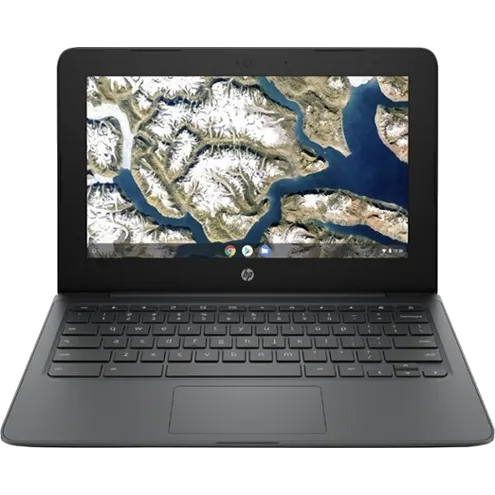
Our Blog
Please enjoy our blog articles!

About Covid and Other Viruses
About Covid and Other Viruses
A widespread virus called Coronavirus Disease, caused by a virus belonging to the family of Coronaviridia, was first observed in December 2019 in China and spread throughout the world and alerted every authority to tackle the situation. Unfortunately, it became one of the most destructive viruses, becoming a pandemic and affecting a massive number of people worldwide (2). Globally, healthcare professionals and patients experienced and still somewhat experience extreme health-related hazards specifically caused by the severe acute respiratory syndrome coronavirus 2 (1). Hence, authorities, the public, and professionals shouldn't take safety measures lightly. Like covid, many deadly viruses in the past have led to the death of millions worldwide. For instance, an influenza pandemic (Spanish Flu 1918) spread through North America, Europe, and Asia within 12 months, resulting in around 100 million deaths and infecting approximately 500 people (3). Despite influenza being known to occur less, it is seen as the most threatening due to its destructive nature. Also, in the contemporary world, the global estimation suggests 3% of the population is still affected by it (4). Furthermore, acquired immune deficiency syndrome (AIDS), which is caused by a chronic infection along with human immunodeficiency virus (HIV), was also one of the most deadly pandemics recorded in history, which negatively influenced the lives of almost 80 million individuals (5).
The article will focus on exploring the safety gear or measures that could be used to prevent the spread of covid and other various viruses.
What Safety Gear You Should Use and How It Can Help Prevent the Spread?
Various safety measures or gears are essential for the public and healthcare professionals as it is considered a meaningful way to help prevent contact with the virus and its transmission. This section will discuss several gears and equipment that can be used in such scenarios, and they are mentioned below:
Body Protection
Complete gear equipment (e.g., gowns covering the entire body), which covers healthcare professionals, are the significant ways to protect from covid and other pandemics. It helps to prevent individuals from interacting with the virus directly or getting it from the diagnosed individual while working within healthcare settings. Despite complete gear equipment being a significant preventive measure, it may hinder the care duties and activities of the patients and jeopardizes the treatment of patients; hence practice is required to assist and treat patients while wearing the safety gear (6).
Face Protection
Face covering, such as using face masks (e.g., N95) and protecting hands by using gloves from coming in contact with the infected individuals and surfaces, is also considered to prevent viruses to some extent which are spread by respiratory droplets. Thus, professionals and the public need to use it; however, healthcare professionals should wear face shields, as they may protect against ocular virus transmission. However, it has been observed that prophylactic measures, including face shields and goggles, cannot provide complete prevention from the optical transmission of coronavirus (7); therefore, other gears need to be used simultaneously.
Social Distancing and Disposal of Equipment
Another safety gear in a hospital or healthcare setting is reducing unnecessary contact with surfaces and between other people and patients. Thus, it is recommended to limit the visits of healthcare workers to patients along with maintaining social distance while interacting with others. Moreover, as the policy of disposing of equipment after using it a limited number of times or disinfecting the reusable ones in such settings exists, similar safety measures must be maintained strictly during covid and other virus pandemics (8).
Personal Hygiene
As any single safety gear is not effective on its own, it is suggested to follow all of them to alleviate the probability of virus transmission. During such times, along with other safety gear, taking care of personal hygiene strictly, washing hands regularly (8) (more than you usually do), and using hand sanitizers or disinfectants proves to be the easiest and most effective way for every one (9). Mostly your hands come in contact with various objects and, due to interaction with people, pose a severe threat to you; hence it is recommended to keep personal hygiene a priority for oneself and the sake of others.
Powered Respirators
Despite the existence of an effective ventilation system or some healthcare settings lacking enough ventilation, using air purifiers in such locations can prove to be an effective but supplementary gear to improve the indoor air, which is contaminated by virus-filled aerosols. Studies have explored a similar scenario and suggested that air purifiers can decrease exposure to virus-filled aerosols or droplets in hospitals and clinics, acting as a protective procedure. On the other hand, healthy individuals, suspected ones, and covid patients quarantined at their homes also need to use such powered respirators to reduce the risk and exposure to infection within homes. Air purifiers have a significant benefit but should be considered extra gear while following more crucial other gears (11).
Hearing, Head and Foot Protection
Other than protecting eyes, body, face, and hands, it is advisable to implement hearing, foot, and head protection by wearing hearing accessories or devices like muffs or earplugs, shoe coverings, and head covers, respectively (12). Healthcare professionals (e.g., surgeons) already follow the protocol of covering themselves from head to toe; however, the government should include wearing these accessories in their SOPs so that every citizen follows the procedure and reduces the transmission of the virus from one person to another.
In conclusion, this safety gear, called Personal Protective Equipment (PPE), will help to minimize an individual's exposure to hazards related to health, such as covid, influenza, and other viruses, as they cause severe illnesses and sometimes permanent damage to the health. Furthermore, evidence reveals that covering most parts of your body provides better protection from airborne and contact-based viruses. For instance, a powered respirator (e.g., air purifiers) and a coverall are more likely to protect you against viruses than wearing a gown and N95 mask (10). Therefore, personal protective equipment, such as face shields, face masks or goggles, gloves, protective shoes, full body coverings or suits, and respirators are a significant prevention from various pandemics, so it is better to consider all of them.
References
Batiha, O., Al‐Deeb, T., Al‐zoubi, E., & Alsharu, E. (2020). Impact of COVID‐19 and other viruses on reproductive health. Andrologia, 52(9). https://doi.org/10.1111/and.13791
Malin, J. J., Suárez, I., Priesner, V., Fätkenheuer, G., & Rybniker, J. (2020). Remdesivir against COVID-19 and Other Viral Diseases. Clinical Microbiology Reviews, 34(1). https://doi.org/10.1128/CMR.00162-20
Nickol, M. E., & Kindrachuk, J. (2019). A year of terror and a century of reflection: perspectives on the great influenza pandemic of 1918–1919. BMC Infectious Diseases, 19(1). https://doi.org/10.1186/s12879-019-3750-8
Monto, A. S., & Fukuda, K. (2019). Lessons From Influenza Pandemics of the Last 100 Years. Clinical Infectious Diseases, 70(5), 951–957. https://doi.org/10.1093/cid/ciz803
Becerra, J. C., Bildstein, L. S., & Gach, J. S. (2016). Recent Insights into the HIV/AIDS Pandemic. Microbial Cell, 3(9), 450–474. https://doi.org/10.15698/mic2016.09.529
Chen, F., Zang, Y., Liu, Y., Wang, X., & Lin, X. (2021). Dispatched nurses’ experience of wearing full gear personal protective equipment to care for COVID‐19 patients in China—A descriptive qualitative study. Journal of Clinical Nursing, 30, 13–14. https://doi.org/10.1111/jocn.15753
Sahu, D. K., Pradhan, D., Naik, P. K., Kar, B., Ghosh, G., & Rath, G. (2020). Smart polymeric eye gear: A possible preventive measure against ocular transmission of COVID-19. Medical Hypotheses, 144, 110288. https://doi.org/10.1016/j.mehy.2020.110288
Cook, T. M. (2020). Personal protective equipment during the COVID-19 pandemic - a narrative review. Anaesthesia, 75(7), 920–927. https://doi.org/10.1111/anae.15071
Jing, J. L. J., Pei Yi, T., Bose, R. J. C., McCarthy, J. R., Tharmalingam, N., & Madheswaran, T. (2020). Hand Sanitizers: A Review on Formulation Aspects, Adverse Effects, and Regulations. International Journal of Environmental Research and Public Health, 17(9), 3326. https://doi.org/10.3390/ijerph17093326
Tian, Z., Stedman, M., Whyte, M., Andersen, S. G., Thomson, G., & Heald, A. (2020). Personal protective equipment (PPE) and infection among healthcare workers – what is the evidence? The International Journal of Clinical Practice, 74(11), 13617. https://doi.org/10.22541/au.158931038.80226260
Zhao, B., Liu, Y., & Chen, C. (2020). Air purifiers: A supplementary measure to remove airborne SARS-CoV-2. Building and Environment, 177, 106918. https://doi.org/10.1016/j.buildenv.2020.106918
Veenema, T. G., & Corley, A. (2015). Nurse Safety from Exposure to Chemicals and Biologics: Hazard Assessment, Decontamination and the Use of Personal Protective Equipment. Health Science Journal, 9(6). https://www.itmedicalteam.pl/articles/nurse-safety-from-exposure-to-chemicals-and-biologics-hazard-assessment-decontamination-and-the-use-of-personal-protecti-105844.html

Join Our Newsletter
Get updates on our latest in technology for your industry!
NAVIGATION
LOCATION
Tech Innovation
9627 E 153 St
Noblesville, IN 46060
P: 888.510.4649
E: support@techinnovation.com
All Rights Reserved 2023. Tech Innovation
